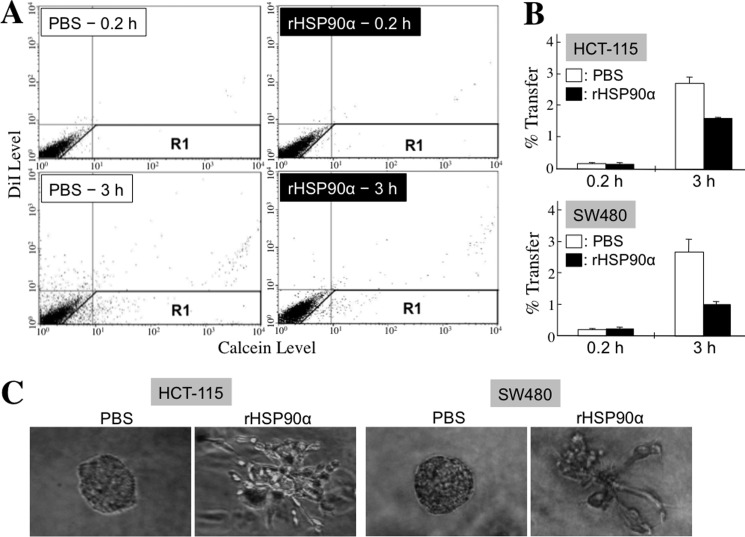FIGURE 3.
rHSP90α inhibits gap junction activity in CRC cells and induces invasive outgrowths of CRC cells from spherical structures during three-dimensional culture. A and B, the Calcein transfer assay was performed to evaluate the effect of rHSP90α on CRC cell gap junction activity. HCT-115 and SW480 cells after 24-h PBS or rHSP90α treatment were labeled with Calcein acetoxymethyl ester (Calcein) and 1,1′-dioctadecyl-3,3,3′,3′-tetramethylindocarbocyanine perchlorate (DiI) dyes and then added to a monolayer of unstained untreated cells of the same type for 0.2 or 3 h of co-culture. Finally, the monolayer of cells was trypsinized and analyzed by flow cytometry. The dot plots are representative results obtained from HCT-115 cells (A). The cells in the R1 region were categorized as Calcein-accepting cells. The ratio of Calcein-accepting cells (designated as % Transfer) was quantified using CellQuest software, and the means ± S.D. of three independent experiments show that cellular gap junction activity was significantly inhibited after rHSP90α treatment (p < 0.05; B). C, rHSP90α represses the three-dimensional spherical structures assembled by CRC cells. HCT-115 and SW480 cells were cultivated in 2% Matrigel-supplemented medium until spherical structures formed. These cells were then treated with 15 μg/ml rHSP90α for 72 h. The change in morphology was observed using an Olympus IX71 inverted microscope.

